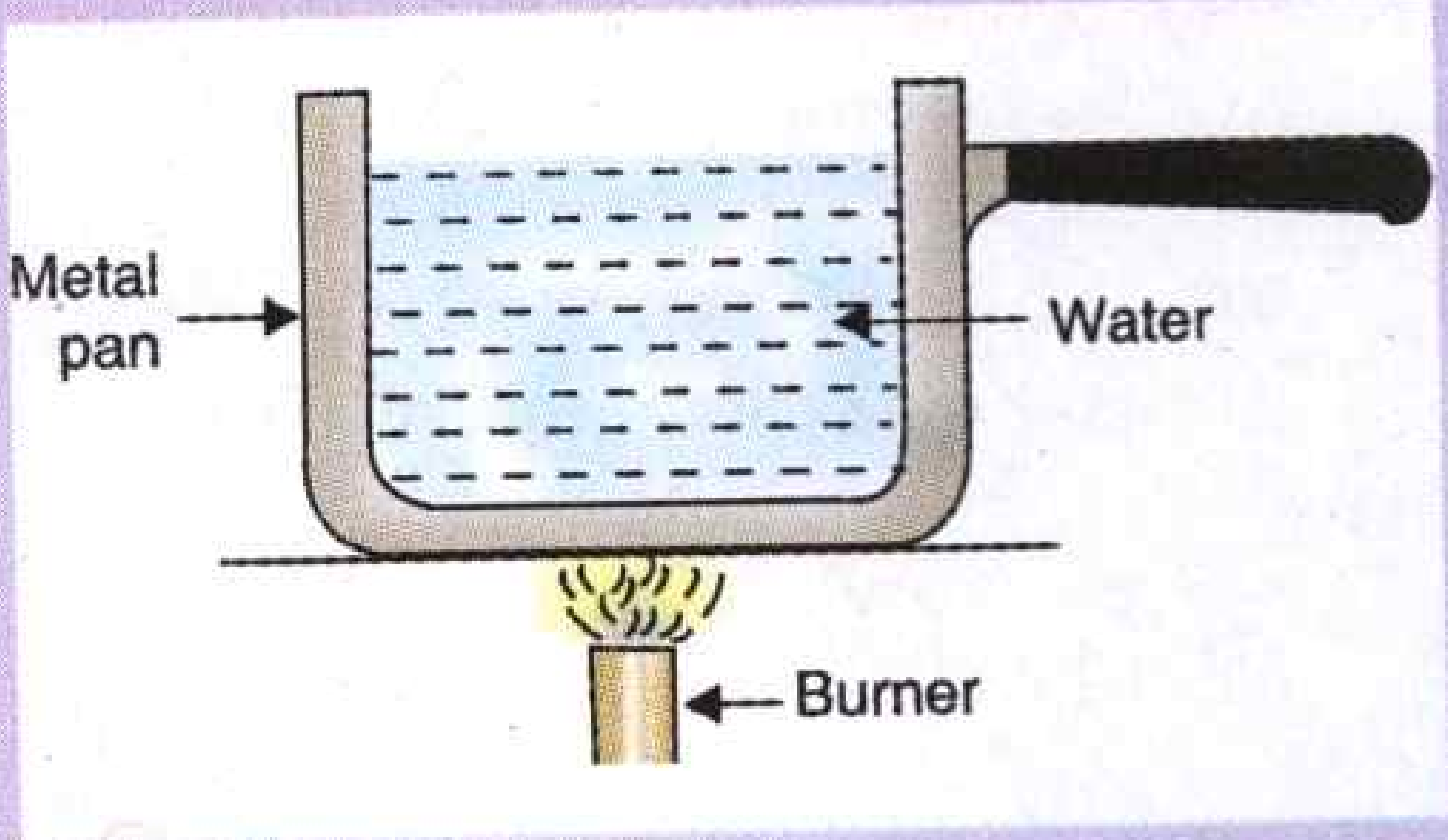Conduction, convection, and radiation are
Different modes of heat energy
Different modes of heat transfer
Different measures of temperature
All of these
Step-by-Step Solution
1. Understanding Heat Transfer:
- Heat transfer is the movement of thermal energy from one object or substance to another. There are three primary modes of heat transfer: conduction, convection, and radiation.
2. Conduction:
- Conduction occurs mainly in solids. It is the process where heat is transferred through a material without the movement of the material itself.
- For example, if one end of a metal rod is heated, the particles at that end gain energy and vibrate faster. These energized particles collide with neighboring particles, transferring energy to them. This process continues along the rod, causing the entire rod to heat up over time.
3. Convection:
- Convection occurs in fluids (liquids and gases). It involves the movement of the fluid itself to transfer heat.
- For instance, when water is heated in a pot, the water at the bottom becomes hot and less dense, causing it to rise. As it rises, cooler, denser water descends to take its place. This creates a circulation pattern that transfers heat throughout the fluid.
4. Radiation:
- Radiation is the transfer of heat through electromagnetic waves. Unlike conduction and convection, radiation does not require a medium; heat can be transferred through a vacuum.
- For example, the heat from the sun reaches the Earth through radiation. Any object can emit or absorb radiant energy, which is why we can feel warmth from a fire even when we are not in direct contact with it.
5. Conclusion:
- In summary, conduction, convection, and radiation are different modes of heat transfer. Conduction is primarily in solids, convection occurs in fluids, and radiation can happen in a vacuum.
- Heat transfer is the movement of thermal energy from one object or substance to another. There are three primary modes of heat transfer: conduction, convection, and radiation.
- Conduction occurs mainly in solids. It is the process where heat is transferred through a material without the movement of the material itself.
- For example, if one end of a metal rod is heated, the particles at that end gain energy and vibrate faster. These energized particles collide with neighboring particles, transferring energy to them. This process continues along the rod, causing the entire rod to heat up over time.
- Convection occurs in fluids (liquids and gases). It involves the movement of the fluid itself to transfer heat.
- For instance, when water is heated in a pot, the water at the bottom becomes hot and less dense, causing it to rise. As it rises, cooler, denser water descends to take its place. This creates a circulation pattern that transfers heat throughout the fluid.
- Radiation is the transfer of heat through electromagnetic waves. Unlike conduction and convection, radiation does not require a medium; heat can be transferred through a vacuum.
- For example, the heat from the sun reaches the Earth through radiation. Any object can emit or absorb radiant energy, which is why we can feel warmth from a fire even when we are not in direct contact with it.
- In summary, conduction, convection, and radiation are different modes of heat transfer. Conduction is primarily in solids, convection occurs in fluids, and radiation can happen in a vacuum.
Topper's Solved these Questions
- HEATBOOK - BEIITIANSCHAPTER - HEATEXERCISE - IIT JEE Worksheet (I. Single Correct Answer Type)
10 Videos
- HEATBOOK - BEIITIANSCHAPTER - HEATEXERCISE - IIT JEE Worksheet (II. Multiple Choice Questions)
4 Videos
- HEATBOOK - BEIITIANSCHAPTER - HEATEXERCISE - HOTS Worksheet (True or False)
4 Videos
- ELECTRIC CURRENT AND ITS EFFECTSBOOK - BEIITIANSCHAPTER - ELECTRIC CURRENT AND ITS EFFECTSEXERCISE - IIT JEE WORKSHEET (V. Matrix Matching)
3 Videos
- MEASUREMENTBOOK - BEIITIANSCHAPTER - MEASUREMENTEXERCISE - IIT JEE WORKSHEET (IV INTEGER TYPE)
1 Videos
Similar Questions
Define conduction, convection, and radiation.
View SolutionWhat are the basic differences between , conduction, convection and radiation?
View SolutionWhat are the differences between conduction, convection and radiation?
View SolutionTemperature ,conduction ,convection, radiation.
View SolutionLook at Figure. Mark where the heat is being transferred by conduction, by convection and by radiation.

View SolutionLook at the Figure given alongside. Mark where the heat is being transferred by conduction, by convection, and by radiation.

View SolutionTransfer Of Heat: Radiation|Difference Between Conduction, Convection And Radiation|OMR
View SolutionTransfer Of Heat: Radiation|Difference Between Conduction, Convection And Radiation|OMR
View SolutionHeat Transfer| conduction | convection | radiation | thermal combination
View SolutionTemperature, Conduction, Convertion Radiation .
View Solution
